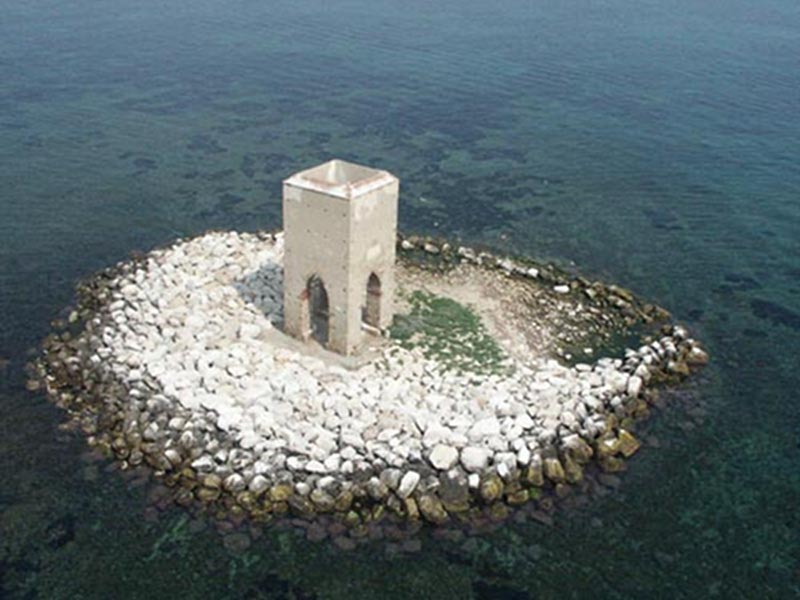Area Marina Protetta Secche della Meloria
www.ampsecchedellameloria.itPoints of Interest
The Tower of Meloria
The Tower of Meloria rises on the shallows and the rocks emerging from the Ligurian Sea (Shallows of Meloria) at about 7 kilometers far from the Port of Livorno. In this area many shipwrecks occurred, therefore also many wrecks belonging both to military and civilian ships can be found here and make Meloria a significant underwater archeological area.
According to historical documents, because of the frequent shipwrecks near the Port, the Republic of Pisa, in the first half of the 12th century, decided to raise a tower which could serve as a look-out station against sudden attacks from Saracens and which could warn of the dangerous shallows at the same time. The tower, with its many torches represented for sailors a lantern in the night (as it was actually called).
Mascagni Terrace
A big square overlooking the Tyrrhenian sea, delimited by an elegant and sinuous balustrade made of 4,100 small white columns, with a 8,700 square meters-long chessboard made of 34,800 black and white tiles as floor.
Situated in the heart of the seafront, it has risen since 1925 on the ruins of the Eden amusement park - where some of the first Italian cinematographic shows were presented in the late 1800 - on the basis of a project by the engineer Enrico Salvais in collaboration with Luigi Pastore.
Once the works were ended, in the early 1930s, Ghino Venturi built the Gazebo for music, a round temple with a cap supported by circular columns, subsequently destroyed by the bombing of the Second World War. It was initially named after Costanzo Ciano, a leading figure from the Livorno Fascist Party, who managed to bring his name to the structure during the regime. In the post-war period, it was considerably enlarged towards the north using the ruins of the city centre and dedicated to the Livorno composer Pietro Mascagni. From an architectural point of view, it is not affected by the strict stylistic dictates of the regime, assuming, for the whiteness of the surfaces and the infinity of the columns, an aspect of metaphysical abstraction, reminiscent of the paintings by Salvador Dalì.
Scoglio della Regina (The Queen's Cliff)
Located on the Livorno waterfront, near the Moletto Nazario Sauro, Scoglio della Regina was baptized in honour of the Queen of Etruria Maria Luisa of Bourbon, who in 1806 had a basin filled with sea water, excavated on the main rock thanks to four channel. The Queen went there with the court and, protected by prying eyes, she immersed herself enjoying the hydrotherapeutic properties of the seawater baths. In 1846, Carbone Squarci, a doctor, had the concession and authorization to build a masonry bathing establishment: a small building joined to the mainland by a six-arched bridge. Other nobles and regents visited the baths in summer, as well as great writers and prominent personalities. In 1930, the construction of the Moletto Nazario Sauro ended, indispensable for the need of wealthy regular customers to have a dock near the bathing establishment.
Fortezza Vecchia
The Fortress represents and characterized the heart of Livorno, from which it developed and changed from a medieval village into a real town.
In recent years the Old Fortress has been the scene of many cultural, theatrical and musical initiatives, which have allowed all citizens, especially the youngest ones, to exploit a symbol of the city history as well as a meeting place.
New Fortress
In 1576 the architect Buontalenti prepared a drawing for an inhabited area, closed by a wall and a pentagonal-shaped system of ditches; the plan did not indicate the presence of a real fortress, but was limited to the simple tracing of a continuous fortified circuit, characterized by five bastions at the top of the pentagon and at the centre line of the northern side, with the sixth obtained from the existing Old Fortress.
The Fortress represents and characterized the heart of Livorno, from which it developed and changed from a medieval village into a real town.








